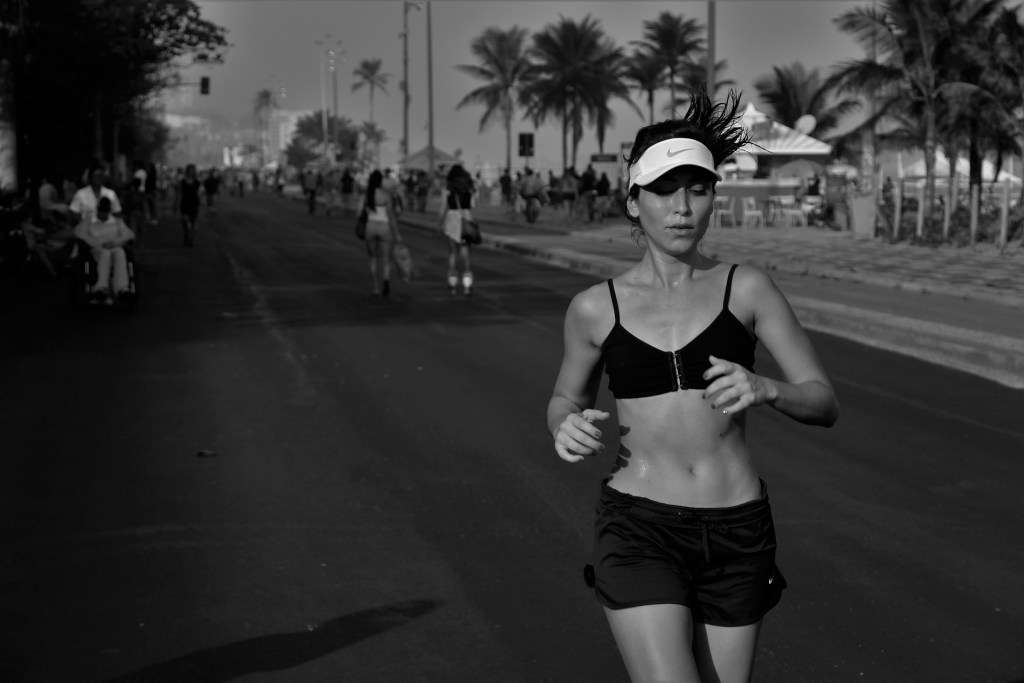
Race walking is believed to date back to Victorian England. It’s also been a competitive event in the Olympics since 1904. But it can also be an effective way to lose weight or speed up your metabolism.
You don’t have to engage in speed walking competitively to benefit from this form of exercise. However, if you are going to integrate speed walking into your exercise routine, you may as well nail the right technique.
Race walking has a very specific set of rules that requires participants to adopt a series of race walking techniques. If you don’t know how to perform the techniques properly, you probably won’t get the most from race walking.
The first rule of race walking is that one foot must be on the floor at all times. The participant’s leg must also be straight and not bent. In a competitive race walker, contestants would be disqualified if they break either of these rules three times during the race.
No matter whether you dream about winning Olympic gold as a race walker or you want to ramp up your weight loss program with some speed walking, adopt race walking techniques that are efficient and compatible with your gait.
Here are some tips.
1. Head and Eyes
Experienced race walkers don’t look immediately ahead into the distance. They tilt their gaze slightly so they can only see 20 yards in front of them. Try to keep your neck muscles relaxed to avoid tension.
2. Arm Swing
Adopting a good technique with your arms is important for maintaining a strong core and helps with the leg technique. A good arm swing will enable you to walk faster with more control.
Your arms are used to give you power and balance when you’re speed walking. In race walking, your hands should not cross the midpoint of your body on the forward swing.
The best technique for race walking is to swing your arms vigorously, but keep them loose and relaxed. Your arms should stay close to your body so that the heel of the hand can be felt lightly brushing the hip bone. As a result, your arm movement will come from the shoulders.
The forward swing of your arm should be parallel to your torso and not driven upwards. This can be quite tricky to master at first because the instinct is to raise your elbows higher like you do when you’re running.
During the backswing, the arm should not be extended beyond your current range of motion otherwise it can interrupt your posture and impair breathing. When your hand comes in line with your hips, it’s far enough.
3. Body Posture
Body posture plays a key part in how effective your race walking technique is. The aim is to maintain a straight body posture. Leaning forward or allowing your shoulders to arch backwards can diminish your power and slow you down.
Tightening your abdominal muscles helps to neutralise the curvature of the lower back. However, don’t over-tighten otherwise the discomfort can put you off your stride. But over-relaxing can cause you to instinctively lean back which will slow you down.
On the flip side, if you lean forward slightly can tip you off balance and cause you to lose control of your stride. This may mean you are unable to keep one foot on the ground or you disrupt your rhythm and flow.
4. Legs and Stride
The hardest race walking technique to perfect is retaining at least one foot on the ground. The front heel must be planted before the toes of your trailing foot leave the ground.

Strides must be completed by bending the knee. To do this, bring the knee thorough at a low elevation by swinging the leg forwards rather than stepping.
The easiest way to perfect your stride is to begin walking slowly at the start of each practice until you find your rhythm. You can then gradually speed up until you are in full flow. But race walking does require a lot of focus on your stride because the natural way of walking is to allow the knee to bend.
Try to keep your ankles relaxed despite the strain they are under. If you felt your ankle you risk overstressing the tendons at the top of the ankle. Whilst you may not notice the over-stressing whilst you’re in full flow, aching ankles will make walking uncomfortable later that night and/or the following day.
The length of your stride is also important. Stretching to far, known as ‘over-striding’, may feel like you are gaining more distance but it actually slows you down. Over-striding is not an efficient technique and can cause “soft -knee”. Over-striding can also cause injury to your groin, knee joints, hamstrings and gluteal muscles.
When you first start race walking, especially if you are not accustomed to exercising that tests your leg muscles, you may feel a burning sensation in your shins (shin splints). This may pass or lessen after a couple of weeks. If the problem persists, race walking may not be for you.
Download the Sweatcoin App
Sweatcoin fully understands the benefits of walking and wants to encourage people from all walks of life to engage in one form of walking or another. Whilst race walking is not for everyone, it’s a great strategy for participants that have weight loss goals.
Race walking is also popular with former runners that are struggling with joint pain whenever they go for a run. But whatever your preferred method of walking is, you can earn money by downloading the sweatcoin app.
The sweatcoin app has a built-in pedometer that counts the number of steps you take every day and converts them into digital tokens known as SWC. You can use the digital tokens to purchase merchandise from over 300 online retailers – and all because you fancied going for walk. So why not go walkabouts more often and earn more money to spend on goods.



